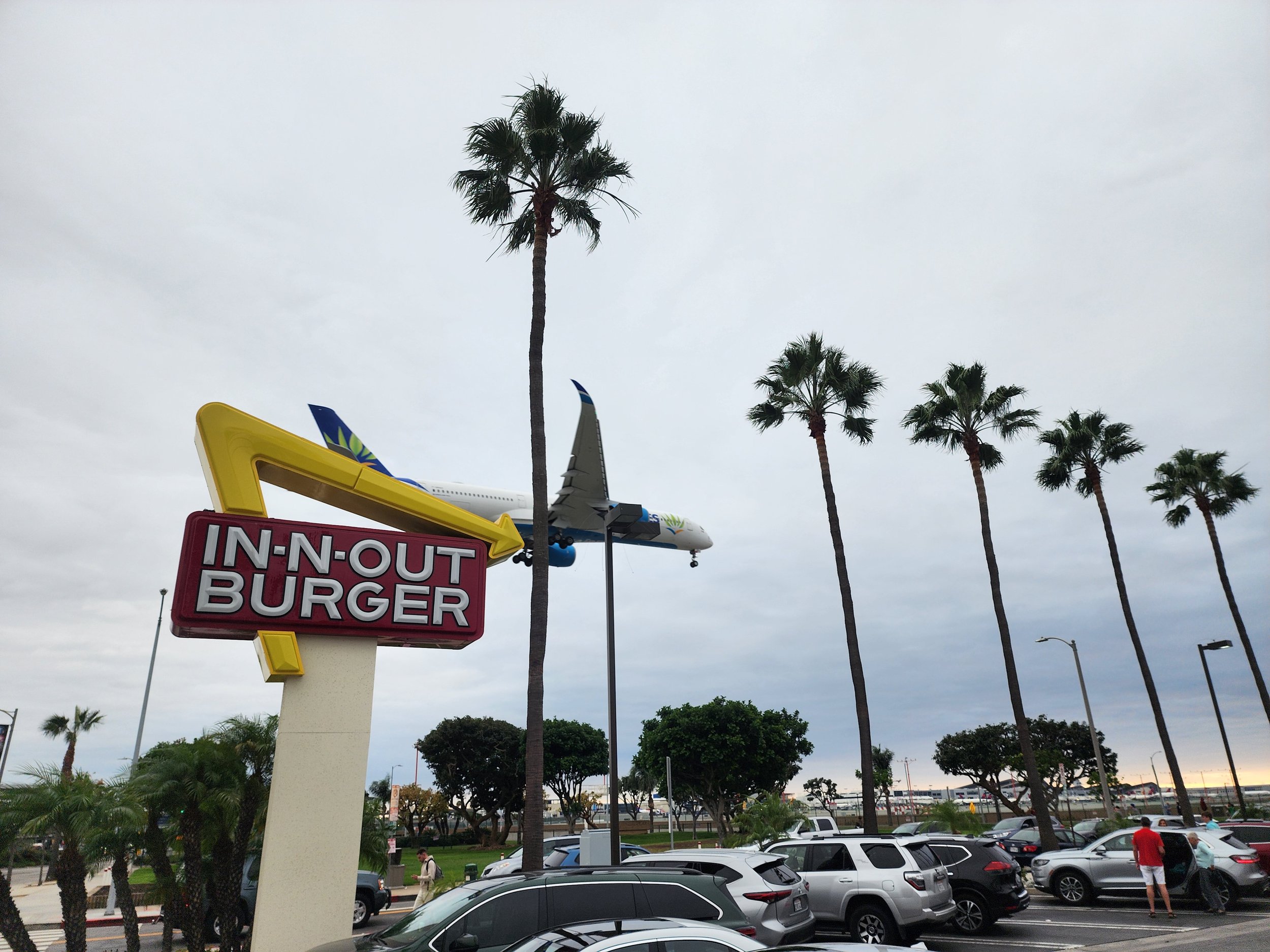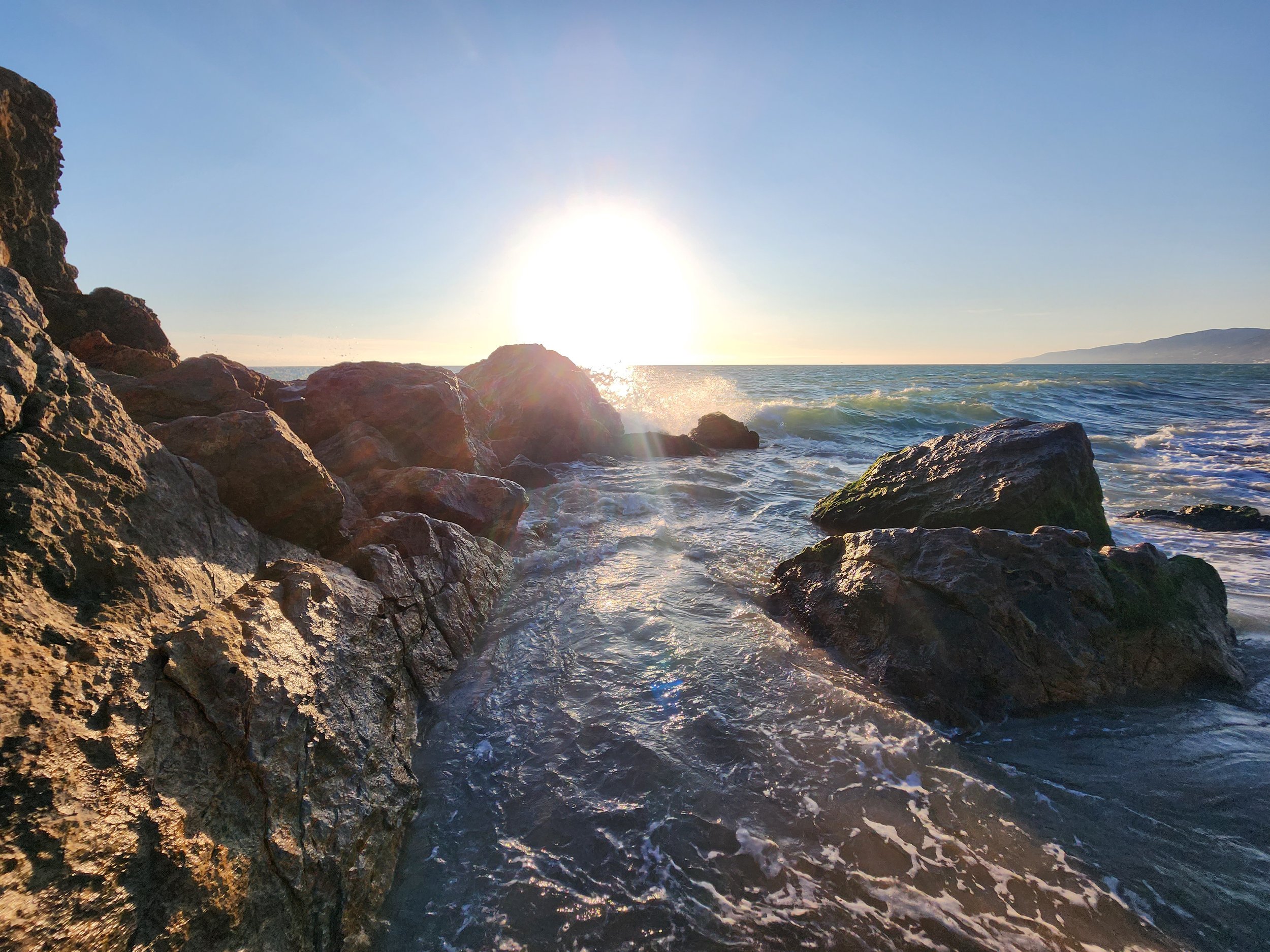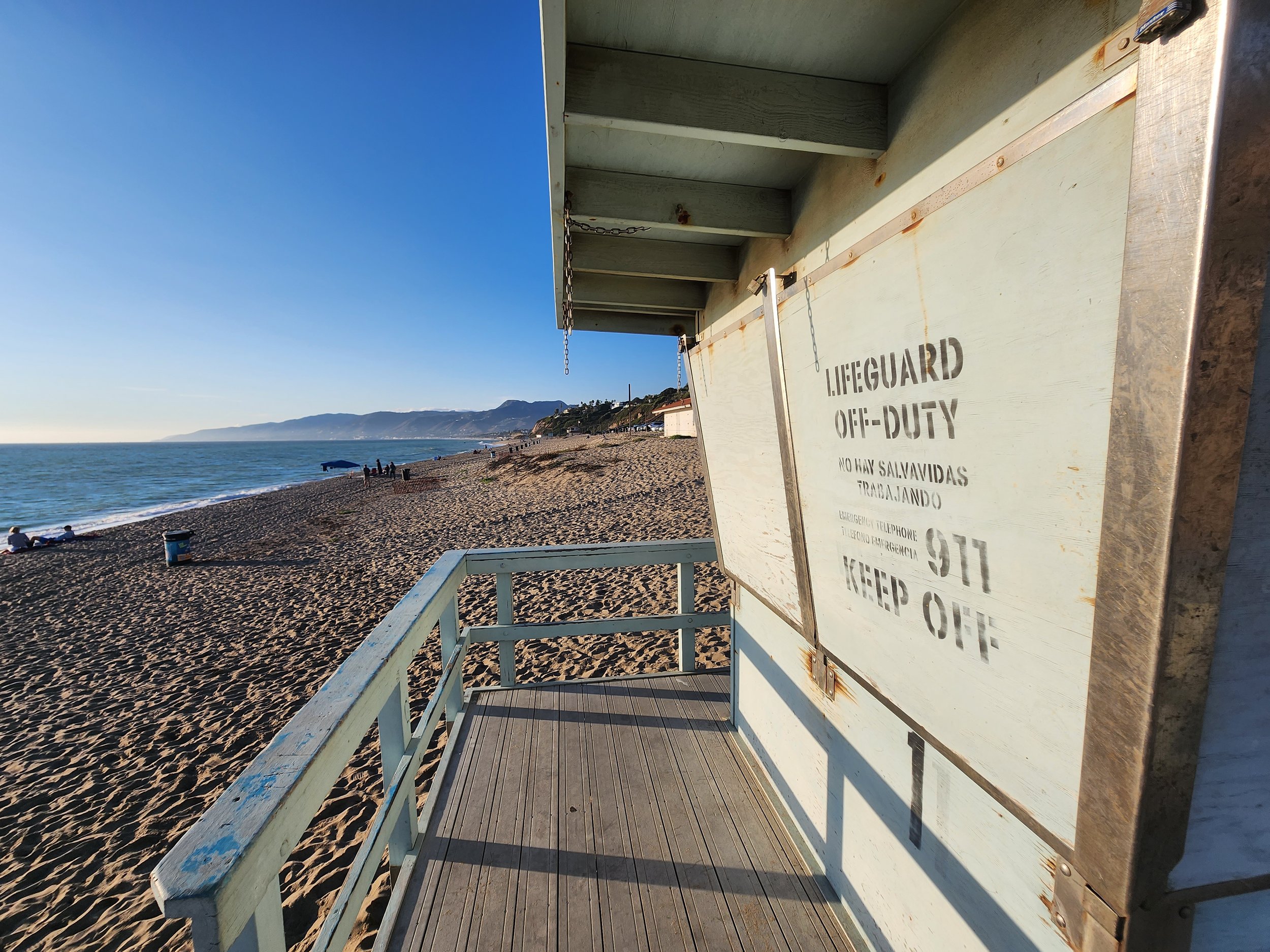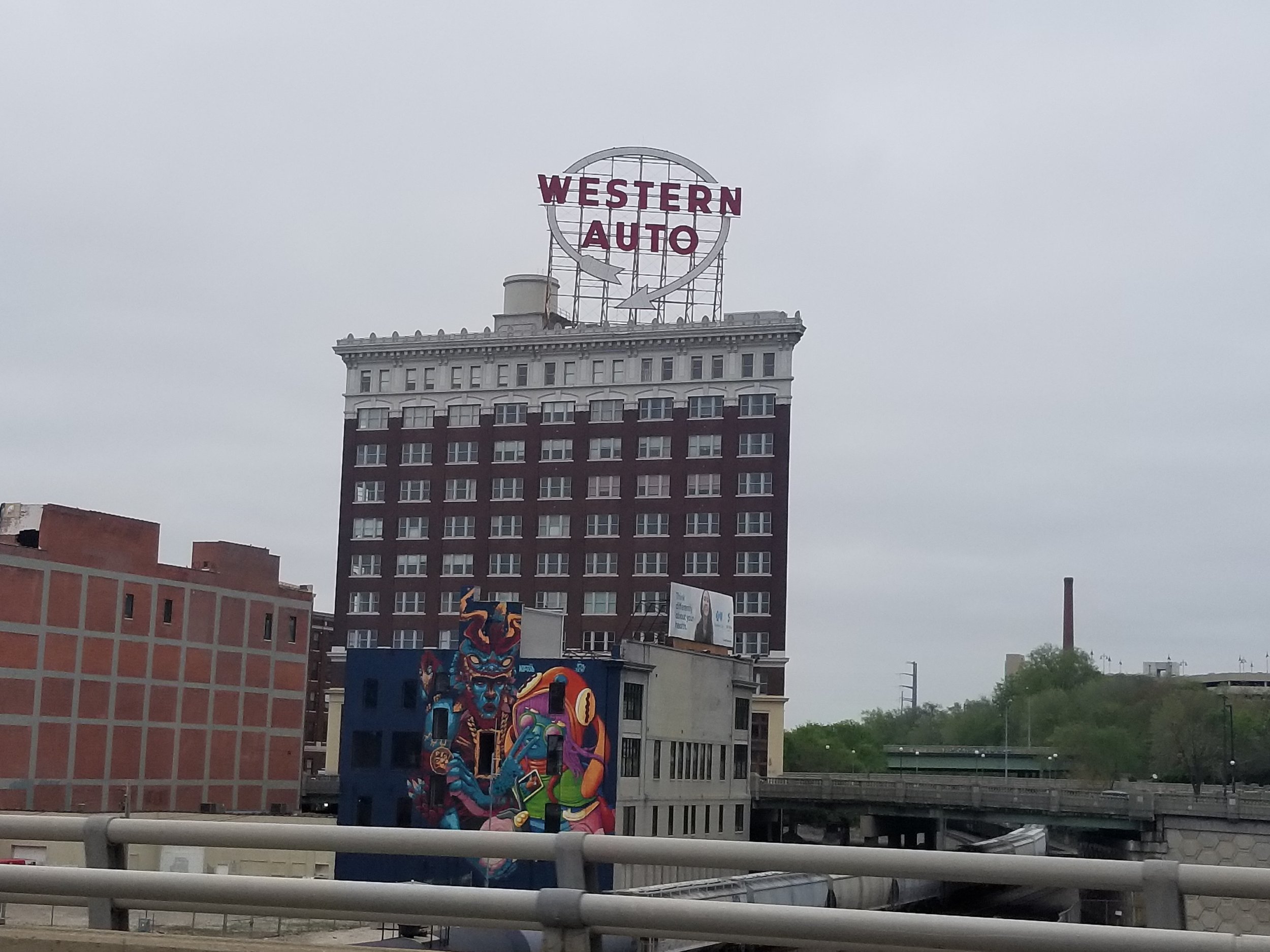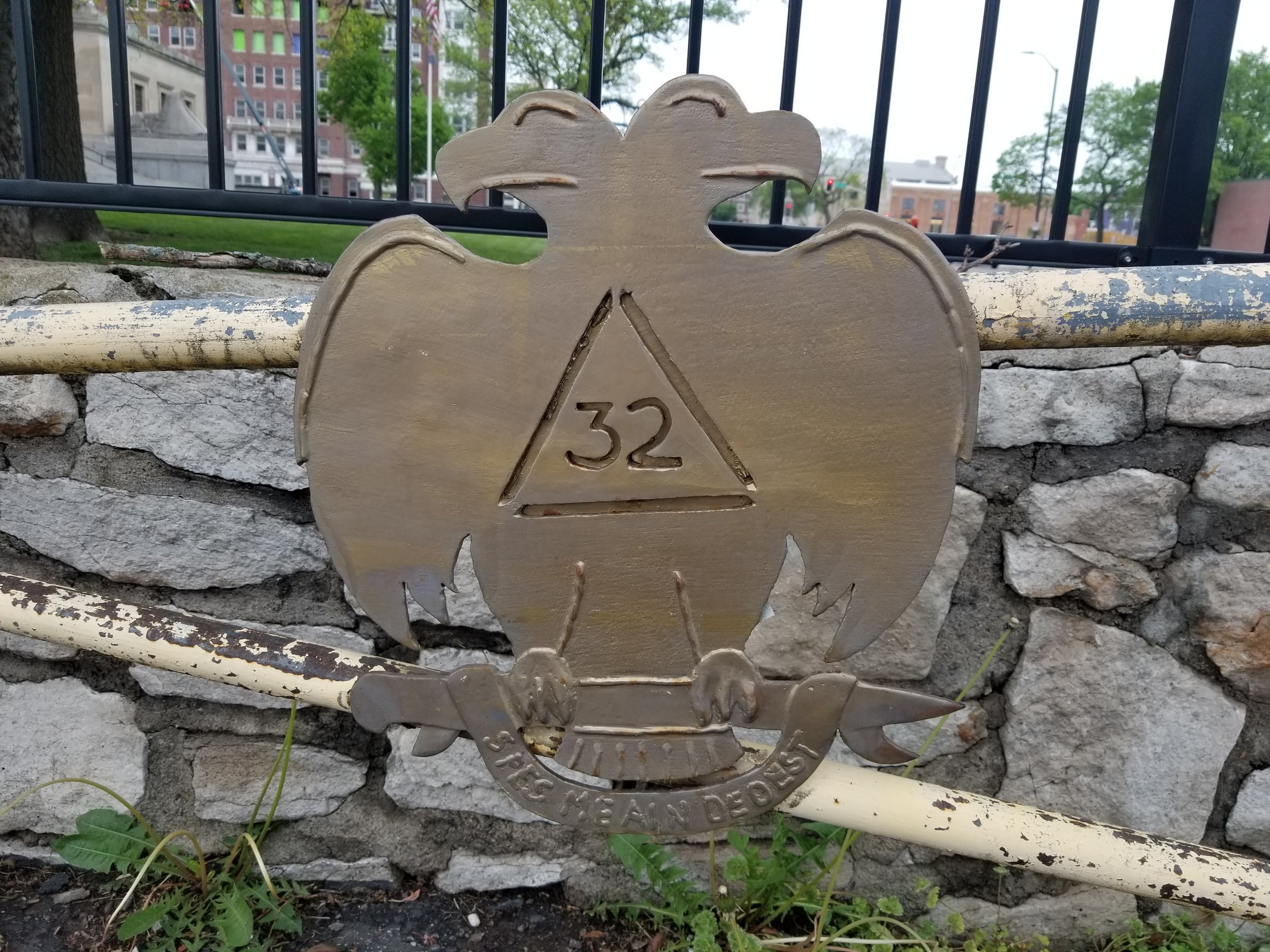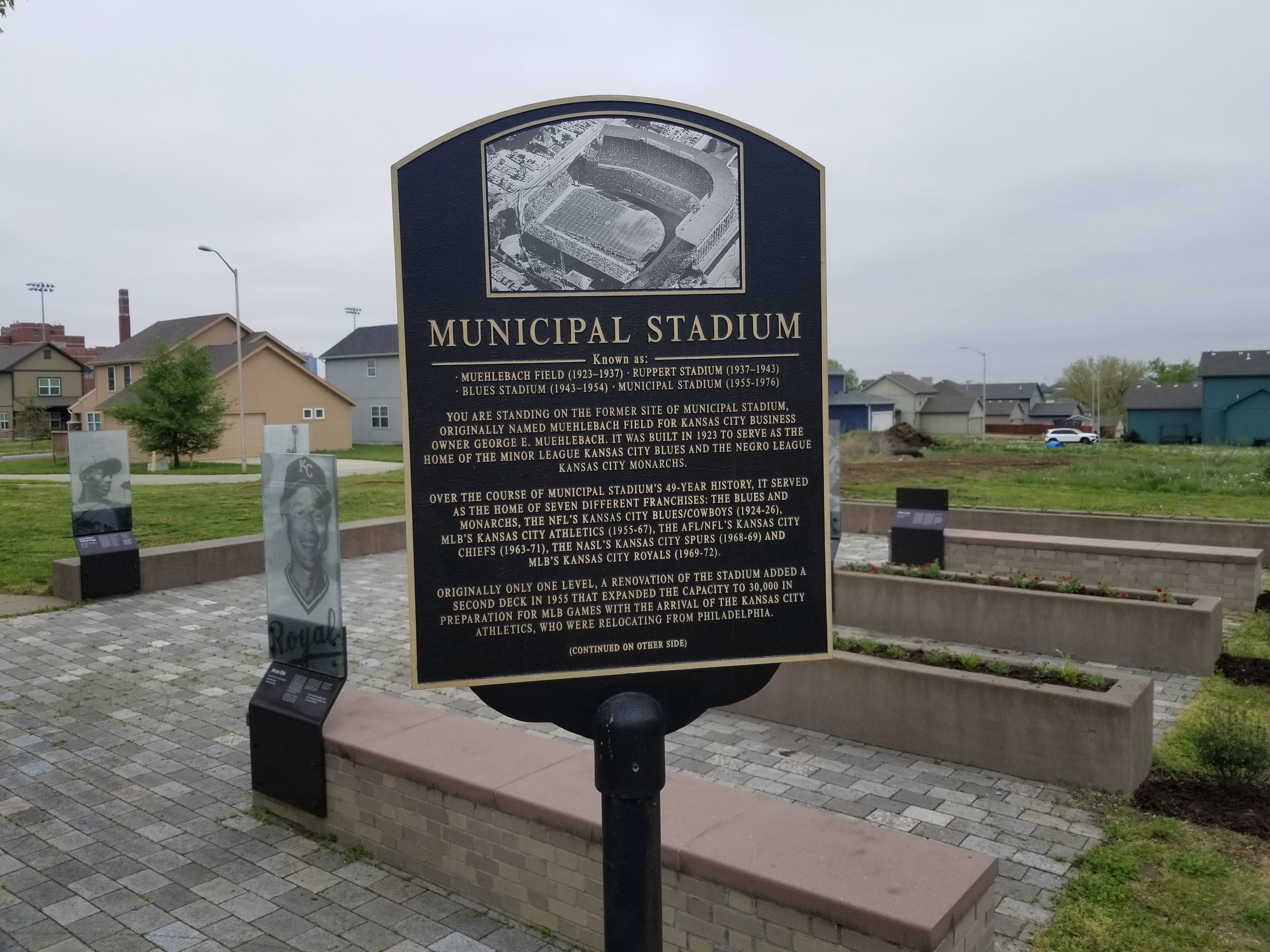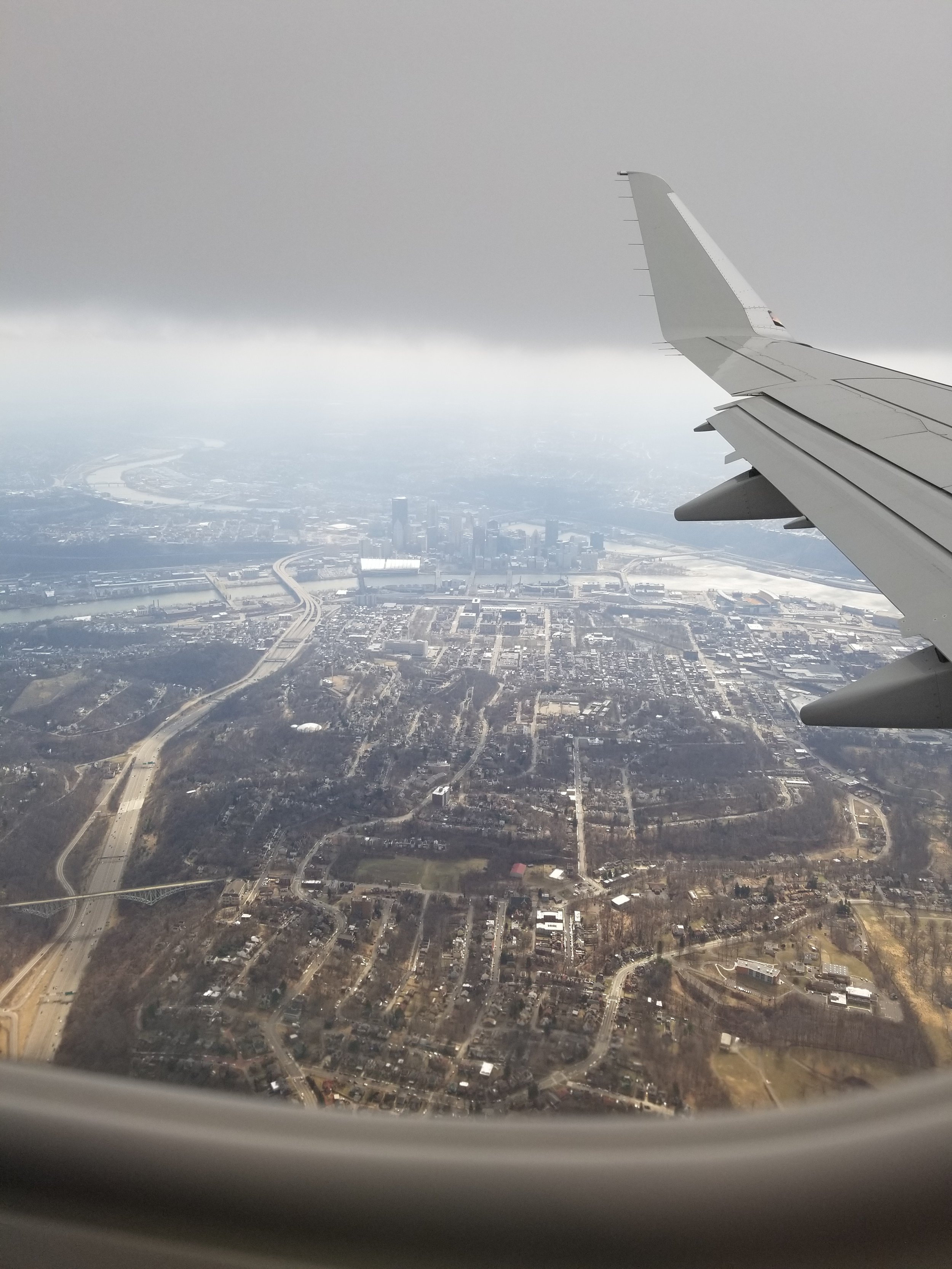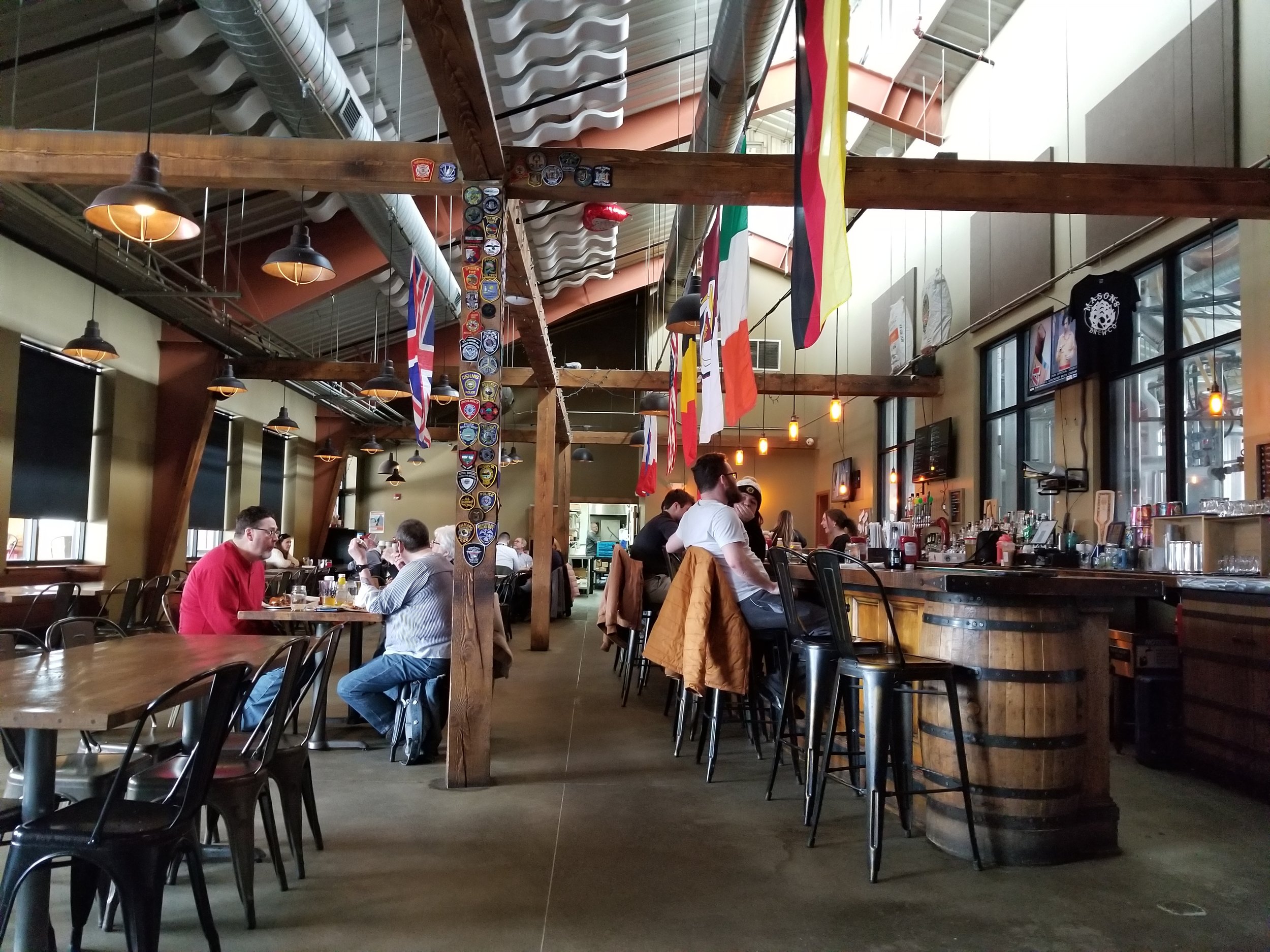Paris, Texas is a film about space. Space that you move through and space that you move beyond. The spaces between people, both inner and outer. It is a film utterly fixated upon landscapes: geographical landscapes, symbolic landscapes, and emotional landscapes. It offers one of the most evocative depictions of American environments in narrative cinema. It is a film about how the emplacement of memory provides a foundation for our identity and self-understanding, and how our imaginations of the places we want to end up provide conceptual and affective orientation for our forward movement into the future. It’s about the power of naming places and the power of a nameless place.
The film evokes dichotomy and duality at multiple levels beginning with the title itself. In addition to its dichotomous construction as two words separated with a comma, the title conjures contrasting spatial imaginaries. The disparate associations elicited by “Paris” and “Texas” respectively stage a conceptual distinction between elegant urbanity and rugged frontier. This polarity is reflected throughout the film in the juxtaposition between geographic landscapes and built environments, and in the way the cinematography frequently captures natural light and artificial illumination within a single frame. It is also reflected in the depiction of the two brothers, Travis and Walt. One brother wanders out of the desert and silently conceals his mysterious past, embodying a sort of wild unknowability. The other brother is immersed in civilization and domestic life, rooted in commerce and materiality by virtue of his trade. They are like a postmodern Cain and Abel, with one tending the flock and the other tilling the ground.
The film’s all-encompassing thematic and visual spatial concerns are established in the opening shot: an aerial view of a vast desert topography composed of rugged mesas, sloping escarpments, spindly buttes and jutting shafts of stone beneath broad blue sky. The airborne camera sweeps across this arid landscape until it finds a lone figure traversing the tableau. We cut to a closer view for our first look at Travis. Dressed in a dust-covered navy pinstripe suit, gold necktie, and red baseball cap, he casts an incongruous visage as a solitary testament to contemporary civilization amidst the timeless natural backdrop.
Travis soon wanders into a human settlement. He staggers into an apparent cantina housed in a small standalone building and collapses.
“The DUST has come to stay. You may stay or pass on through or whatever.” - Sign in Terlingua cantina
Glimpses of identificatory signage in the area establish the location as Terlingua, an actual town in Texas. Some historical context from Legends of America:
The name “Terlingua” actually applies to a mining district, and there were three different settlements located here in southwestern Brewster County. The name derives from two Spanish words, tres, and lenguas, meaning “three tongues,” called such for one of two reasons. Still debated today, some say “three tongues” refer to the three languages spoken in the area long ago – English, Spanish, and Native American. The second reason refers to the three forks of Terlingua Creek.
The notion of “three tongues” evokes the production of the film itself: a German and French co-production shot in the United States. The narrative also features many multilingual and international elements: there is a Spanish thread woven throughout the film, with Travis’ recollection of his mother’s Spanish lineage, his use of Spanish language and pronunciation as subtle indicators of his time in Mexico, and in the brief bilingual sequence with Carmelita; Walt’s wife Anne is from France and teaches French words to Hunter; and the Terlingua doctor who tends to Travis, Doctor Ulmer, speaks with an evident German accent. When Ulmer’s diagnostic inquiries are wordlessly rebuffed by Travis’ persistent silence, his response offers another lingual allusion:
Doctor Ulmer: Guess something must have cut your tongue off.
The lighting in Doctor Ulmer’s office presents the first example of the distinctly green fluorescent light that will be a persistent visual element in the film. Having received no information from his patient Doctor Ulmer dials a telephone number that he discovered in Travis’ pockets, a number that is revealed as belonging to Travis’ brother Walt.
Our first glimpse of Travis depicted him as a miniscule figure dwarfed amongst the vast desert landscape surrounding him. The first time we see Walt he is framed in medium close-up against the backdrop of a slate-black high-rise office building. While we can discern a field of blue sky in the distant background along the left and right edges of the frame, Walt’s figure is entirely encompassed within the borders of the tower, its monolithic surface defined only by orderly rows of opaque windows.
The scene cuts to a wide shot to reveal that Walt is not standing in front of the building after all but rather an oversized photograph of a building propped up against a wall behind him. He appears to be in a sort of industrial workshop and we see other massive images scattered around the area. This is our first introduction to Walt’s business of creating billboard advertisements. The initial image of Walt juxtaposed against the modernist office building visually establishes the character’s association with urban environments, and the subsequent depiction of his workspace strewn with oversized images further concretizes his connection to artificial landscapes. Walt populates the physical environment with images, and the interconnections between images in space and images of space will be a recurring theme throughout the film.
Walt flies to Texas to find Travis. A short scene of Walt sitting in an airplane with blue sky visible through the porthole window behind him dissolves to a shot of him at a gas station. It is a stunning shot and one of the greatest examples of how the film’s photography evocatively captures the contrast between natural and artificial light within a single frame. Walt is positioned in the mid-foreground standing beside and behind his parked car. He stands beneath the gas station overhang and everything in Walt’s immediate environment is awash in the green-blue pallor cast by the station’s fluorescent lights. In the background, electrically-illuminated signs and street lights trail off along a silhouetted landscape to the horizon line where the last remnants of twilight glow orange against the darkening dusk sky.
Walt studies a road map that lies open on the roof of the car. He reads out highway numbers and place names as he plots his route to Terlingua:
“10 to Van Horn, 90. To Alpine, 118 South.”
As Walt verbalizes these numeric route designations he is visually embedded within a tangle of arithmetic iconography: a “99¢” sign on the ice machine behind him, the fuel prices listed on the gas station marquee, and the highway road signs visible in the background.
Walt arrives in Terlingua only to be told by Doctor Ulmer that Travis disappeared that morning. He sets out in his car to continue the search. Soon enough he comes across Travis, who is not walking along a road but rather only occasionally bisecting the paved paths as he cuts through open fields. Travis marches resolutely through grazing livestock and across glistening blacktop as if tracing out some invisible line guided by an unseen lodestar. He strides right past Walt’s stopped car without seeming to notice the vehicle at all.
“You look like 40 miles of rough road.” - Walt to Travis upon their reunion
Walt takes Travis to a motel. When Walt goes into town to buy his brother some new clothes Travis marches out of the motel room. He heads down a gravel road past a billboard advertising the “Marathon Motel and Trailer Park,” and sign poles bearing notices for “TV” and “vacancy” and embellished with the stars and stripes.
Walt once again gives chase and this time he finds Travis walking along railroad tracks. After looking down the stretch of tracks and telling his brother that “there’s nothing out there,” Walt coaxes Travis into the car.
The scene cuts to a POV shot looking out through the car windshield, past the sweeping wiper blades. The car travels across a rain-slicked road toward the fading embers of sunset beneath a canopy of dark cloud. The shot holds as the vehicle moves toward another neon-lit oasis of roadside rest stops and restaurants, illuminated marquees for establishments with names like “El Rancho Motel” and “Silver Saddle Lodge.” It is another of the film’s stunning landscape shots: the horizon line that constitutes the meeting point between the vast stretch of highway and the endless sky is rendered in the liminal luminosity between the setting sun and the neon nightscape.
In their motel room Travis sits on the bed and gazes at his reflection in the mirror, presaging the film’s climactic confrontation and emotional apex.
The next morning Walt stops at a gas station down the street from the motel before getting on the highway. While they sit parked at the gas station Travis speaks for the first time in the film: the word “Paris” spoken three times in succession. When Travis asks if they can go to Paris Walt assumes he is referring to the French capital, but the camera cuts to reveal that Travis is studying a map of Paris, Texas. The homonymous confusion remains unresolved for the time being.
When the brothers arrive at the airport Travis seems skeptical about the change in their mode of transportation:
Travis: Where are we going?
Walt: We’re gonna fly to L.A. You’re not afraid of flying, are you?
Travis: We’re leaving the ground?
Walt: Yeah.
Travis: Why?
Travis does not seem persuaded by Walt’s assertion that flying is “faster” and “easier.” Indeed, the plane stops in the midst of taxiing on the runway so the brothers can disembark, evidently at Travis’ insistence. After apologizing to the flight attendant for delaying the departure Walt admonishes his brother’s erratic behavior, explaining that he’s “not in the wilderness anymore” and can’t behave in such a way in civilized society.
When they go to rent a car to continue the journey to L.A. Travis insists on having the same vehicle that Walt initially had. After some discussion Walt eventually convinces the rental service representative to provide him with the license plate number of his original vehicle so they can search the lot and find the car.
Travis: How are we gonna go in another car?
Once returned to their rental car Walt drives while Travis sits in the backseat regarding something in his hand. Walt asks what his brother is holding and Travis responds that it is: “A picture of Paris. A picture of a piece of Paris.” The photograph shows a plot of land, mostly bare dirt, with a small “For Sale” sign embedded in the earth. Travis explains that he bought the lot of land “a long time ago.” Walt looks at the picture of the vacant lot again and says “there’s nothing on it.” Travis laughs and says: “Empty.”
Further along in their journey Travis tells Walt that he remembers why he purchased the plot of land. Based on something his mother once told him, he believes that he may have been conceived in Paris, Texas.
Travis: So, I figured that that’s where I began. I mean me: Travis Clay Henderson. They named me that. I started out there.
As Travis and Walt continue this conversation in the car their exchange is presented in a sequence of intercutting shots. Rather than filming the characters together in a two shot from the front of the car, the scene cuts between individual shots of Walt driving and Travis in the passenger seat. The shots are angled in such a way so that each man is positioned in a lower corner of the frame, while the opposite-upper portion of the frame shows the surrounding highway traffic and the roadside sprawl stretching beyond. The resultant effect is a multi-level depth of image where our characters in the car are in the foreground, the passing traffic of other vehicles on the highway occupies the middle ground, and the background is a swiftly-moving landscape of billboards, light poles, and McDonald’s arches. It is a visually dynamic way to shoot a car conversation, and an evocative depiction of highway travel through the material landscape of the American built environment.
As the brothers enter greater Los Angeles Walt explains that he lives in the suburbs but has his business “in town.” Travis asks what his business is and Walt explains: “I make billboard signs for advertising.”
Here again one of the key thematic distinctions between the brothers is emphasized. Through his business of outdoor advertising Walt is centrally implicated with the construction of the built environment, with the creation of material and symbolic landscapes. He installs signs and images in space. By contrast, Travis carries an image of space. His photograph of the plot of land in Paris, Texas represents a complementary inversion of Walt’s relationship to space. Travis’ clarification that his photograph shows only “a piece of Paris” indicates an awareness of the image as a fragment, rather than a totalizing abstraction of a place. (It is worth noting, however, that Travis’ photograph also contains an example of signage in space by virtue of the “for sale” sign; this detail reveals the overlap between the brothers’ spatial associations, and also demonstrates an additional dimension of how space is fragmented and parceled out.)
The brothers arrive at Walt’s home which sits on a hill overlooking the L.A. urban sprawl and the constant air traffic of the Burbank Airport. The first morning after their arrival Walt’s wife Anne finds that Travis has collected all the shoes from the house during the night. She finds the footwear laid out neatly along a low brick wall in the backyard where Travis sits with a pair of binoculars watching the planes taking off and landing at the airport. As he observes a plane’s departure a POV shot reveals that Travis is tracking not the aircraft itself but rather the shadow cast by the plane; he is following the part of the plane that does not “leave the ground” during its flight.
In addition to reuniting with his sister-in-law Anne, Travis also reconnects with his 7 year old son Hunter, whom he has not seen for the past 4 years. On this first morning as Anne is getting in the car with Hunter to take him to school Travis offers to walk Hunter home that afternoon. Anne seems enthusiastic about the idea but Hunter balks at the suggestion, telling Anne: “Nobody walks, everybody drives.” Evidently the son shares his father’s particularity about modes of transportation.
When Hunter sees Travis waiting across the street after school that day he ignores his estranged father and asks his friend if he can ride home with him instead. Later that evening Travis, Anne, and Walt sit around the kitchen table worrying about Hunter’s whereabouts. Walt soon finds Hunter hiding out in the garage, sitting in the driver’s seat of a parked car with his hands gripping the steering wheel. He explains that he is “just driving,” and avoids Walt’s questions about Travis by asking: “When are they going to make spaceships like they make cars?”
This scene is followed by the splendid “home movies” sequence, a superb centerpiece moment in the film. With the acoustic accompaniment of Ry Cooder’s slide guitar, the characters wordlessly watch silent Super 8 footage of a family vacation from years earlier when Hunter was only 3 years old. Well, almost wordlessly: the scene features a solitary exchange of dialogue between Hunter and Travis after the Super 8 footage shows Travis driving an RV while toddler Hunter sits in his lap pulling on the steering wheel:
Hunter: That’s me driving.
Travis: I know. You’re gonna be good.
Cars and driving provide an obvious throughline in Paris, Texas, not only as part of the overall travelogue themes and “road movie” motifs, but through salient dialogue and persistent character associations. Travis and Hunter’s shared preoccupation with cars and driving suggest something about motor vehicle operation as a rite of passage. There is also a semblance of automobility as autonomy, a tangible realization of control and self-direction.
The “home movies” sequence marks a turning point in the film. It stages a development in the relationship between Hunter and Travis, who demonstrate closer affinity following the scene. It is also the audience’s first glimpse of Jane.
In a subsequent scene the Henderson’s housekeeper Carmelita observes Travis rapidly flipping through the pages of a magazine. He explains that he is looking for an image of “the father,” and she discerns that he is searching for a visual archetype of fatherhood that he can emulate. She helps him try on outfits from Walt’s closet, and asks whether he wants to appear as a rich father or poor father. After Carmelita asserts that there is no in-between, only a binary distinction between “rich father” and “poor father,” Travis opts for “rich.”
Carmelita: OK, one thing you must remember: to be a rich father, Señor Travis, you must look to the sky and never at the ground, eh?
Newly adorned in his “rich father” garb Travis is waiting across the street when Hunter leaves school that afternoon. Father and son walk along together on opposite sides of the street, until finally coming together in the middle of the street at the top of the hill. It’s a charming sequence with Harry Dean Stanton channeling silent film-era physical comedy and pratfalls, and a wonderful piece of visual storytelling.
Back at home Travis and Hunter look through a family photo album, and we learn that Travis and Walt’s father was killed in a car accident. The revelation evokes not only the recurring references to automobiles, but also Doctor Ulmer’s questioning Walt back in Terlingua whether Travis had ever been in a car accident.
Some time later Anne reveals to Travis that Jane has been depositing money into an account for Hunter. Using the bank account information, Anne had the wire traced to a bank in Houston. With the knowledge that Jane makes a deposit on the 5th of every month, Travis determines to travel to Houston in search of Jane.
This is followed by an interlude sequence: a lateral tracking shot following Travis as he walks along the sidewalk at dusk. The camera keeps pace as Travis passes in front of a car wash where latin music can be heard playing from a radio, then across a freeway overpass. As he crosses the span a voice is heard shouting from off camera, growing louder as Travis draws nearer. The voice bellows an apocalyptic jeremiad over the din of the rushing traffic below:
Screaming Man: They will invade you in your beds! They will snap you from your hot tubs! They will pluck you right out of your fancy sports cars! There is nowhere, absolutely nowhere, in this godforsaken valley -- I’m talking about, from the range of my voice, right here, clear out to the Mojave Desert, and beyond that! Clear out past the Barstows, and everywhere else in the valley all the way to Arizona! None of that area will be called the safety zone! There will be no safety zone! I can guarantee you the safety zone will be eliminated! Eradicated! You will all be extradited to the land of no return! It’s a navigation to nowhere!
When Travis reaches where the Screaming Man is standing near the center of the overpass he pauses momentarily to regard the man, then steps off the sidewalk to walk around him. As Travis passes he reaches out one hand to lightly brush the man’s back and shoulder in an ostensible gesture of sympathy and perhaps understanding.
Travis tells his brother about his intentions to leave in search of Jane as they are standing atop a billboard while Walt’s latest advertisement is installed. In spite of his earlier aversion to leaving the ground, Travis expresses appreciation for the change in perspective afforded by the higher elevation:
Travis: Too bad things don’t look the same on the ground.
Walt: What do you mean?
Travis: Well, things are clearer up here. Might clear things up.
Travis informs Hunter of his upcoming quest as they are sitting in the bed of his newly acquired pickup truck. They eat lunch parked along the side of a freeway beneath the sweeping spans and towering concrete columns of highway interchanges. Hunter tells Travis that he wants to come along to Houston, and so the two head out together.
Once they are out on the open road Hunter regales Travis with a brief history of the universe:
Hunter: This whole galaxy, this whole universe, used to be compressed into a tiny spot this big. And you know what happened?
Travis: What?
Hunter: It went *pchoo* and blew up! All the spark, everything went flying all over the place and formed space. It was just gas, it was floating around.
Travis: The earth was?
Hunter: Yeah, the earth was really gas. And the sun formed, and it was so hot that the earth just formed into one hard big ball of oceans; nothing but ocean. So there were sea animals, and under the water a volcano went *pchoo* and the hot lava hit the water and formed rock to make land.
This vignette expands the film’s spatial concerns from local landscapes to the cosmos itself; from the daily spaces of quotidian life to galactic timescales of evolutionary development. It provides further evidence of Hunter’s fascination with outer space: he wears a silver bomber jacket emblazoned with NASA patches and the space shuttle emblem; he sleeps in Star Wars sheets; he asks Walt when space ships will be as available as cars; he recognizes Houston as the location of the Space Center. It also offers another link between spatial concerns and questions of origin, reflecting Travis’ preoccupation with Paris, Texas as the site of his conception, the place “where he started.”
The duo stop at the Cabazon Dinosaurs tourist spot in Riverside County, just west of Palm Springs. Hunter calls home to let Walt and Anne know what he is on the road with Travis. The sequence provides another striking example of the film’s evocative photography of neon lights and illuminated road signs reflecting off the glass of a phone booth, another instance where the fluorescent lights emit a particularly green hue.
Further along on their journey Hunter rides in the truck bed and uses their newly purchased walkie talkies to explain special relativity and time dilation to Travis.
Once they’re in Houston Travis and Hunter track Jane to a peep-show club where customers can observe sex workers through a one-way mirror and communicate via telephone intercom. The peep-show setting continues the film’s occupation with gaze, image, and spectularity. I’ve already commented on how Walt and Travis are engaged with images in and of space. But Jane’s presence in the film is also always rendered through a mode of observation and imageability. She is first glimpsed in the silent Super 8 footage of the “home movies” sequence. Afterward Hunter tells Anne “that’s not really her, that’s just her in a movie.” Later in the film Travis gives Hunter a strip of photobooth pictures of Jane so that he can recall his mother’s face. When Travis finally sees Jane again for the first time in four years it is through the window of the one-way mirror; she is framed for observation and he remains unseen to her.
Yet the peep-show booths also reflect the film’s abiding interest in space, and in particular the kinds of spaces the characters have been moving through. Each viewing cubicle is themed around a particular generic location and outfitted like a stage set. The first booth Travis enters is designated “Poolside” and features set design and props intended to evoke an indoor natatorium. When Travis finally sees Jane she is in a “Hotel” themed booth decorated with the accoutrement of a scaled-down simulacrum: a mini-sized bed; a lamp and red telephone resting on a small dresser; a faux window partially obscured by drapes; the ubiquitous television set propped in a corner. When Travis sees Jane for the second time it is in a “Coffee Shop” themed booth.
These viewing booths are themed after spaces that we’ve seen throughout the film: hotel rooms, coffee shops, roadside diners. Liminal “non-places,” virtual spaces of transit, the generic spaces of transition between places of meaning and dwelling.
Paris, Texas is a film about space. Of course, it is about a lot of other things, too. The dramatic core centers around relationships that have become strained by emotional and geographic distance. The character arcs are about hurt and loss, about coming to terms with a traumatic past or narrativizing one’s personal history to make meaning out of chaos. The story slowly reveals underlying elements of abuse and addiction and rage. When Travis finally narrates the events that led to his solitary sojourn through the desolate desert the story is almost unbearably sad and evokes haunted histories and legacies of inhumanity.
So the film is about more than mere space and should not be reduced or essentialized to its surface elements of picturesque landscape photography or evocative imagery of urban sprawl. Yet even the film’s most personal articulations of the deepest human experiences find their expression through spatial language and imaginaries.
Travis: And for the first time he wished he were far away, lost in a deep vast country where nobody knew him. Somewhere without language or streets. And he dreamed about this place without knowing its name.
Travis conveys his desperate flight away from the calamitous despair that had overtaken his life. This flight led him into the desert, away from the maddening markers of civilization that reminded him of his own inhumanity. It is as if he intuitively sought solace or salvation in a primal existence apart from the intrinsically corrupting forces of society.
Travis: For five days he ran like this, until every sign of man had disappeared.
Travis tells Jane that Hunter is waiting for her at a hotel called The Meridian. The film once again asserts the geographic imagination through the name of the hotel. A meridian is a cartographic feature and suggests boundary, dividing lines, a point of passage or transition. The name is appropriate because Travis is providing Jane with coordinates: a hotel name and a room number that will lead her to her son.
The concluding scenes feature a recurrence of my favorite visual motif in the film: Travis stands beneath the greenish glow of a light post on the roof level of a parking garage, gazing out at a twilight sky cast in transitional bands of color from the fading orange of the setting sun up through hues of deepening blues. From this vantage point Travis observes Jane and Hunter’s reunion through the hotel room window. As with every encounter between Travis and Jane in the film he is observing her through glass, gazing from a removed and distant position. In the final shot of the film Travis’ truck drives away from the downtown Houston skyline, just another anonymous vehicle caught in the flow of freeway traffic underneath a darkening sky.
I had heard acclaim for Paris, Texas for a long time, usually framed as a signal example of Wim Wenders’ masterful directing and a rare leading role in Harry Dean Stanton’s capacious filmography. For whatever reason I had never encountered the film in the wild nor been drawn to seek it out. My exposure to Wenders’ work overall has been limited. I’d seen Buena Vista Social Club, which is a fine documentary. Wings of Desire provoked a mixed reaction: I loved the “city symphony” aspects and existential evocations of everyday Berliner’s internal monologues in the first part of the film, but the latter shift into romantic melodrama left me feeling disconnected.
Then a couple of weeks ago Turner Classic Movies aired a block of Harry Dean Stanton films. I tuned in to catch the end of Wise Blood, then kept the TV on in the background while I worked, with the volume turned down low. Paris, Texas was the next film in the night’s programming. Every now and then I would glance over at the TV and be captivated by the images. It was immediately evident that this was a major work. After some time I increased the volume to hear the dialogue. I was getting drawn in to the narrative, but it was late and I couldn’t stay up to finish the film. I went to bed thinking about the images I had seen and the associations they evoked. When I woke up I was still thinking about them. That morning I turned off all the lights in my windowless home office and watched Paris, Texas in its entirety.
I cannot imagine what this film would’ve meant to me if I had watched it earlier in my life. My experience of it now is inextricably bound up with having spent the last several years thinking about visual communication, representations of place, and spatial imaginaries more broadly. But it is also colored by the personal tragedies of my life experience. Paris, Texas doesn’t just capture a sense of moving through physical environments, it conveys the subjective resonance of these environments with the inner sojourns of one’s life. It speaks to those moments when a bleak personal journey calls out for an accompanying barren landscape. When space defines the horizon of possibility for escape, and solitude offers the only semblance of refuge. It evokes the melancholy recognition of the inexorable incarceration of incarnation. Of the desperation to discard your old maps and seek a new territory. Of being lost in every way that a person can be lost.




